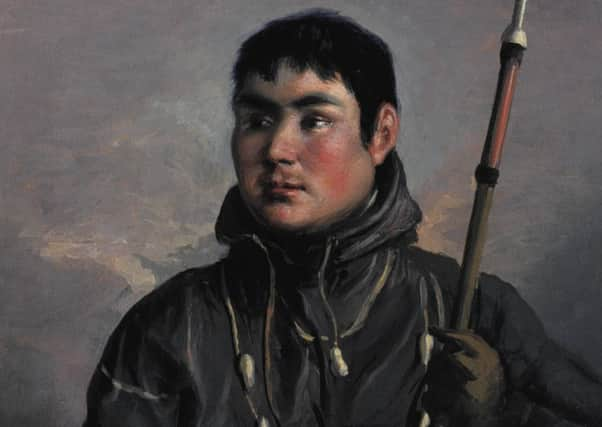Inuit stowaway who found naval glory with Scots aristocrat


Now an author’s research has brought to light how the progressive thinking of members of the Scottish Enlightenment led to that gifted seaman, Hans Zakaeus, whom the Scots called John Sakeouse, becoming the first Inuit to take an official role in a British exploration expedition, joining Admiral John Ross’s voyage to find the fabled Northwest Passage.
The 18-year-old Greenlander had stowed away – along with his kayak – on the Leith whaler the Thomas and Ann.
Advertisement
Hide AdAt a time when in indigenous races were often termed “savages” or deemed “childlike and innocent” and exhibited in “human zoos” at the mercy of showmen exploiting them for money, Sakeouse’s life story is a remarkable tale.
Before his demonstration of kayaking prowess, spectators had viewed Sakeouse in a dock warehouse surrounded by Arctic curiosities such as the preserved skin of a black eagle and a whale carcass. According to the Edinburgh Star of 6 September, 1816, the money raised by his feats allowed him to move into lodgings. This display of independence combined with basic English learned from Danish missionaries helped determine his future.
He soon became a great favourite with Edinburgh Society, particularly the scientific community, who recognised the valuable contribution he could make to furthering their knowledge of the world. Celebrated artist Alexander Nasmyth painted his portrait and gave him art lessons.
Writer James McCarthy, who has examined archive material in the National Library of Scotland in Edinburgh, said it was the special friendship which sprung up between Captain Basil Hall, (1788-1844) a rebellious young Scottish aristocrat, who defied the strict conventions of the era, and Sakeouse, which led to an extraordinary turn of events.
“My interest in Sakeouse started after reading what Basil Hall, a captain in the Royal Navy, wrote about him in the Blackwood’s Magazine and John Ross’s Voyage Of Discovery. It all read like an adventure story.”
Edinburgh-based McCarthy, whose books include That Curious Fellow: Captain Basil Hall, R.N., said: “At a time when most people were class-conscious, Captain Hall, who had been born to a good family with a big estate in East Lothian and a townhouse in Edinburgh, befriended people from all backgrounds, from a South American liberator to Sakeouse.
Advertisement
Hide AdMcCarthy, a former deputy director of Scottish Natural Heritage, added: “Crucially, Hall’s father was the Enlightenment scientist, Sir John Hall, president of the Royal Society of Edinburgh. Sir James persuaded the Admiralty to take Sakeouse on as a paid interpreter on Ross’s 1818 expedition.”
Sakeouse played an invaluable role in making contact with the Inuit, whom Ross called “Arctic Highlanders”, at Cape York in northwest Greenland.
Advertisement
Hide AdRoss wrote about Sakeouse’s bravery when he was despatched – dressed in naval uniform – to meet Inuit who had ignored gifts left on shore: “Sakeouse told them he was a man and a friend… but they generally kept one hand down by their knees in readiness to pull out a knife which they had in their boots.” Friendship ensued and Ross made the contacts he required.
Ross’s expedition failed, but the confidence inspired by Sakeouse helped him find the North Magnetic Pole years later. Sakeouse returned to Edinburgh, where he died of typhus in February, 1819. His funeral was attended by all classes of society.